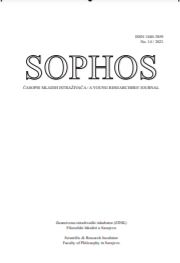PRIKAZ NARUŠENOG IDENTITETA U ROMANU I FILMU “FIGHT CLUB”
REPRESENTATION OF DISSOCIATIVE IDENTITY IN THE NOVEL AND MOVIE FIGHT CLUB
Author(s): Tatjana ŽarkovićSubject(s): Gender Studies, Sociology, Film / Cinema / Cinematography
Published by: Filozofski fakultet u Sarajevu - Znanstveno-istraživački inkubator
Keywords: artwork; gender; hegemonic masculinity; post-industrial society;
Summary/Abstract: The paper illustrates how a cultural product, first in the form of a novel and later as a cult status movie, triggers significant social reactions and polemics. Even though artworks can be abused, they acquire their value precisely through the ability to thematize sensitive topics and initiate social debates. There are different perspectives and interpretations of Fight Club, both of the novel and of the movie. In this paper, the main focus is the gender dimension, ie. the interpretation placing in foreground the discussion on the influence and consequences of hegemonic masculinity and patriarchy, where men are paradoxically suffering and imposing it at the same time. This paradox is leading to men being abusers, as well as accomplices and victims at the same time, which is portrayed very skilfully in the novel and in the movie. The movie opens space for discussions and reflections on gender issues, such as the crisis of traditional conceptions of masculinity in the postindustrial society, the relationship towards the “other” and the toxic responses to crisis.
Journal: Sophos- časopis mladih istraživača
- Issue Year: 2021
- Issue No: 14
- Page Range: 57-73
- Page Count: 17
- Language: Bosnian

